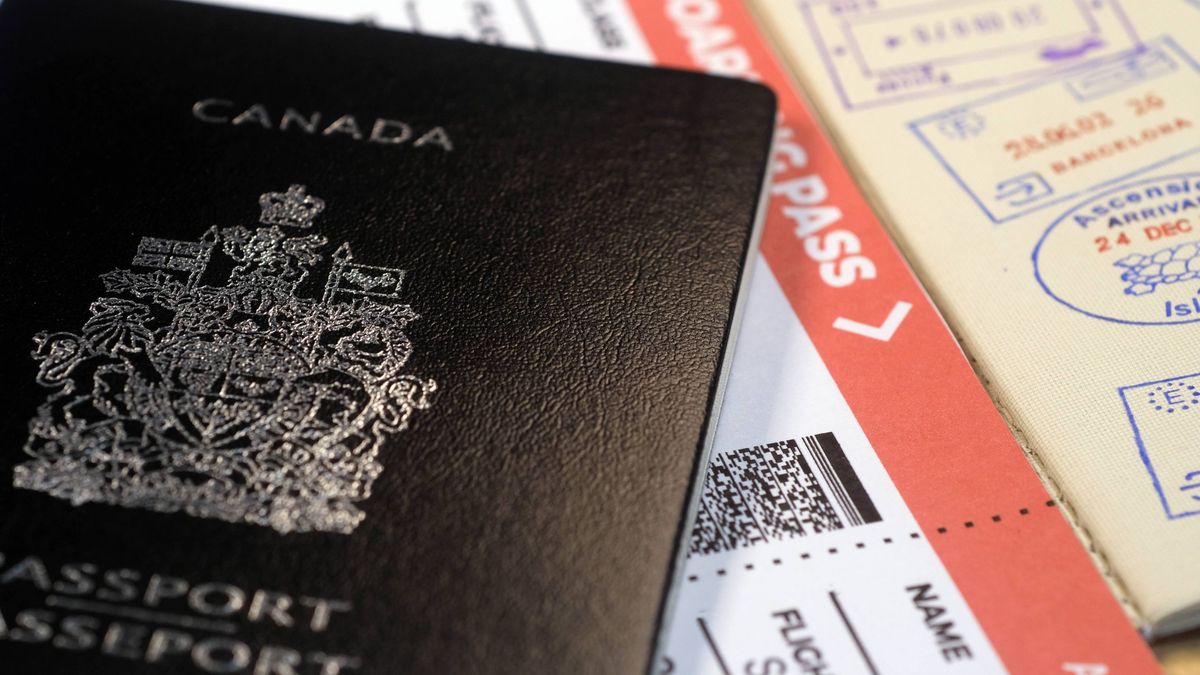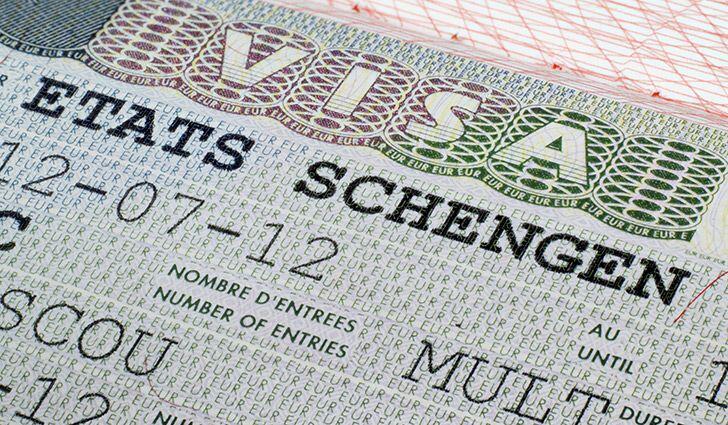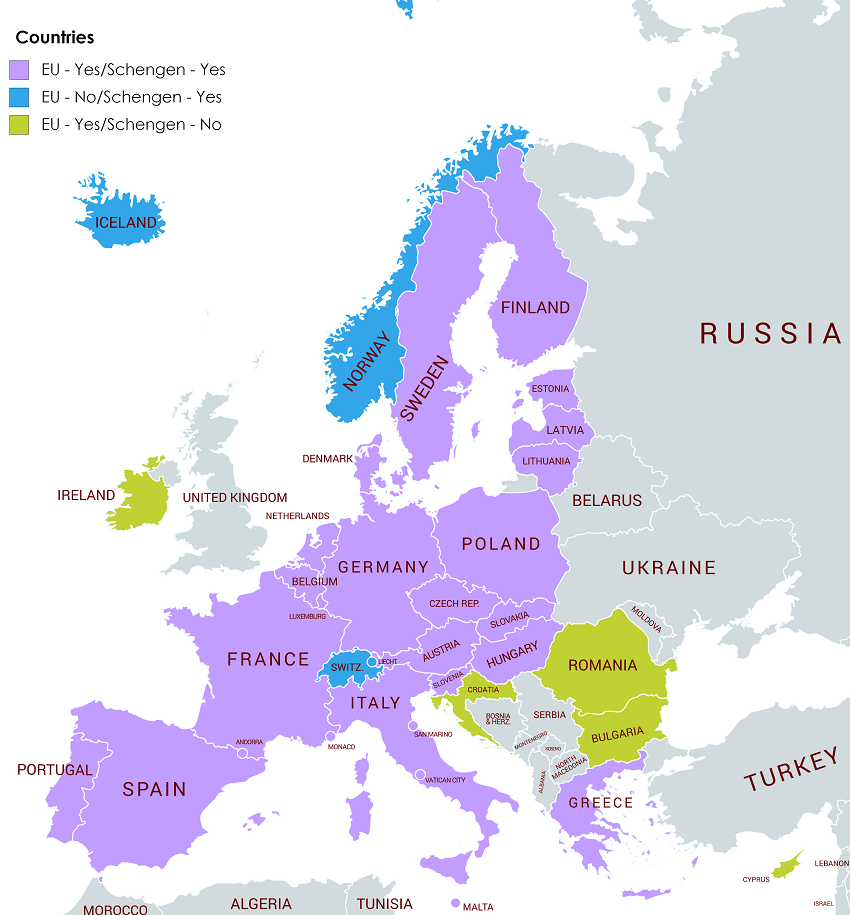The EU has changed its Schengen visa, Americans will soon face new requirements

A few minutes every morning is all you need.
Stay up to date on the world's Headlines and Human Stories. It's fun, it's factual, it's fluff-free.
On February 2, 2020, the European Schengen Area updated its rules for multiple-entry Schengen visas. These visas allow visitors to freely move between the 26 countries within the Schengen Area, an unrestricted zone that consists largely of European Union member states.
For American visitors to the Schengen Area, the changes will have no effect on their ability to travel to Europe. However, beginning in January 2021, US citizens will have to apply for an ETIAS travel authorization.
The multi-entry Schengen visas

Currently, there are three types of multiple-entry Schengen visas: one-year, three-year, and five-year. These visas are required for citizens of all African countries, as well as most Asian countries, including China, Russia, and India.
Anyone who possesses a multiple-entry Schengen visa can move freely through the countries within the Schengen Area (sometimes also called the Schengen Zone).
The visa gives the holder the right to be in the area for up to 90 days in any 180-day period. This is known as the 90/180 Schengen Visa Rule. A person with a five-year multiple-entry visa could visit the Schengen Area up to 10 separate times over that five-year period.
The updated Visa Code changes what is required of applicants who are planning multiple visits to the Schengen Area over a five-year period. The main purpose of the change is to make the process of applying for the visa easier for all involved.
Two of the changes are specifically about making the process easier. The application period prior to a trip has been extended from three months to six months, and member states are now required to provide an electronic means for signing and submitting the application.
With these changes, the fee for the visa will go up from €60 to €80 (or from €35 to €40 for children ages 6-12).
The changes will also make it easier for people who have a “positive visa history” – i.e. those who have never overstayed or misused previous visas, and are financially stable – to get the five-year multiple-entry visas.
Americans traveling to Europe
The US is one of 62 nations, based mostly in North and South America, whose citizens do not need a special visa to enter the Schengen Area as long as the stay is for no more than 90 days. These visitors are only required to provide their passport, their reason for visiting Europe and, potentially, proof of sufficient financial means.
However, on January 1, 2021, that will change. That is the date when the new European Travel Information and Authorization System (ETIAS) will take effect. As explained on the ETIAS site:
The ETIAS visa waiver for Americans is a multiple-entry travel authorization valid for a total of 3 years from the moment of approval. During the 3-year validity of the ETIAS for U.S. travelers, it is possible to enter any of the Schengen Zone European countries which apply to the travel authorization as many times as necessary.
The ETIAS will follow the same 90/180 Schengen Visa Rule as the other multiple-entry visas, and will be valid for up to three years. For longer stays, American citizens will be required to apply for specific Schengen visas, the same as they do now.
In addition to a US$7 fee, the application for the ETIAS requires the applicant to provide basic information including their full name, date and place of birth, current address, parents’ information, and nationality details.
The applicant will also need to have a valid passport and answer questions related to criminal activity, employment history, and previous travel activity.
Members of the Schengen Area

There are 26 countries in the Schengen Area, 22 of which are also currently in the EU. The four countries on the European continent that are within the Schengen area, but are not part of the EU, are Iceland, Liechtenstein, Norway, and Switzerland.
Five members of the EU are not part of the Schengen area: Bulgaria, Croatia, the Republic of Cyprus, Ireland, and Romania. Of those five countries, only Ireland has no agreement to join the area in the future.
The existence of the Schengen Area allows for essentially open borders between the member states. That means travelers between the countries can cross borders without needing to show passports or other forms of identification at border control.
Purpose and history of the Schengen Area
The Schengen Area was created to allow for “free movement of persons”, considered a fundamental right for any citizen of the EU. This allows the more than 400 million EU citizens to not only travel between countries without interference, but also to relocate and work across borders as needed.
The name of the area comes from the signing of an agreement by certain EU member states in 1985, which occurred in Schengen, Luxembourg. The Schengen Agreement did not abolish checkpoints at borders shared by member states, but it paved the way for the 1990 Schengen Convention.
That convention is where the EU states came to an agreement on cross-member visa standards and the ending of border controls. On March 26, 1995, the Schengen Area officially came into existence with the abolition of the borders between seven nations: Belgium, France, Germany, Luxembourg, the Netherlands, Portugal, and Spain.
The Schengen Area has added countries since 1995, with more set to join at a later date.
[article_ad]




Comments ()